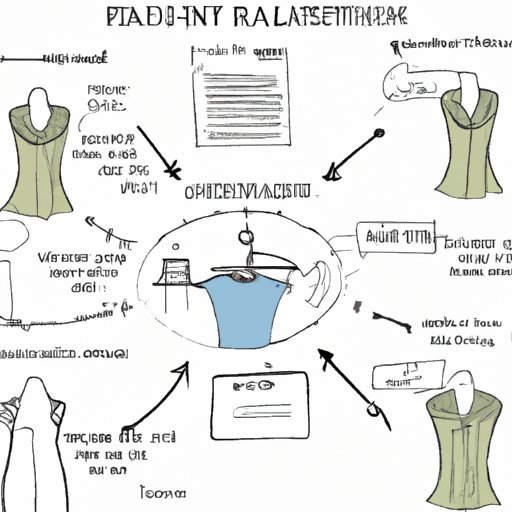Introduction
The fashion industry is a booming business. According to Statista, global apparel market revenues reached about 1.5 trillion USD in 2020. With so much potential for success, it’s no surprise that many entrepreneurs dream of launching their own clothing line. But starting a successful clothing line requires more than just a great design—it requires careful planning and consideration of the current market.
Developing a Business Plan
Creating a business plan is the first step to launching any successful business, and this holds true for clothing lines as well. A business plan should outline your goals and create a roadmap for how you will achieve them. It should also include a budget, which can help keep you on track throughout the process.
When creating your business plan, you should also consider your target audience. Who do you want to reach? What age group, gender, or demographic do you want to focus on? Knowing your target market can help you better craft your product offerings and marketing strategy.
Your business plan should also include a detailed marketing strategy. How will you get the word out about your clothing line? Think about digital marketing tactics such as email campaigns and social media advertising, as well as more traditional methods like print ads and radio spots. The more detailed your plan, the better.
Choosing a Niche
Once you’ve created a business plan, it’s time to decide what type of clothing line you want to create. Do you want to specialize in men’s or women’s clothing? Are you interested in formal wear or streetwear? Or perhaps you want to create a unisex collection? Narrowing down your niche is important, as it will help you focus your efforts and ensure that you are targeting the right customer base.
Sourcing Materials and Suppliers
Once you’ve identified your niche and created a plan, it’s time to start sourcing materials and suppliers. Quality materials are essential for producing high-end pieces, so take the time to research different fabrics and find reliable suppliers who offer competitive prices. You may also need to purchase additional supplies such as thread, zippers, buttons, and labels.
Designing Your Collection
Now comes the fun part—designing your collection! As you create each piece, think about how it reflects your brand identity. What colors, patterns, and silhouettes will you use? Consider how each garment fits into your overall aesthetic, making sure that all pieces work together cohesively.
Marketing Your Line
Once you’ve designed your collection, it’s time to start marketing your line. Digital marketing is a great place to start, as there are a variety of tactics you can use to reach potential customers. Social media is an effective way to spread the word about your clothing line, as is email marketing and search engine optimization (SEO). Additionally, consider partnering with influencers or other brands to help build awareness.
Investing in Retail Partnerships
In addition to digital marketing, consider investing in retail partnerships. Partnering with retail stores and online shops can be a great way to increase visibility and sales. Research different stores and investigate their criteria for stocking merchandise. You may also want to look into wholesale opportunities, which can help you reach a larger audience.
Conclusion
Launching a successful clothing line requires careful planning and consideration of the current market. It starts with creating a business plan and identifying your target audience. Then, you must choose a niche, source materials and suppliers, design your collection, and market your line. Finally, investing in retail partnerships can help you reach a wider audience and boost sales. Following these steps can help ensure that your clothing line is a success.
(Note: Is this article not meeting your expectations? Do you have knowledge or insights to share? Unlock new opportunities and expand your reach by joining our authors team. Click Registration to join us and share your expertise with our readers.)
